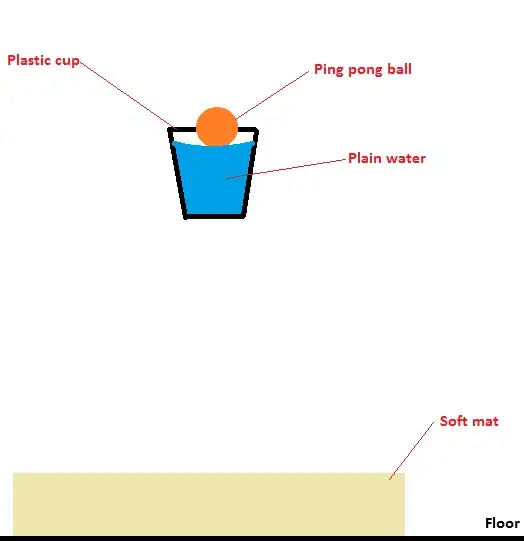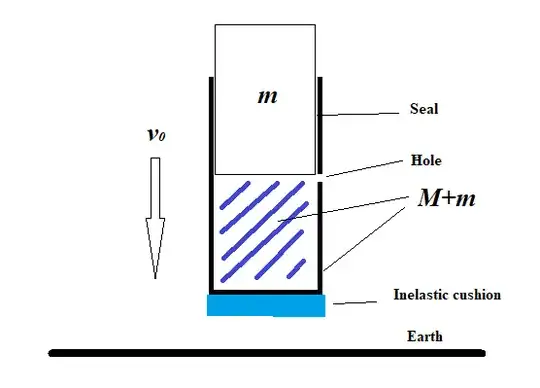My hypothesis why the ping pong ball receives a large upward impulse:
The floating ping pong ball is displacing some water. The amount of displacement does not change much during the fall.
As the cup hits the floor the deceleration of the quantity of water gives a short pressure peak. Because of that pressure peak the water that is in contact with the ping pong ball is (briefly) exerting a much stronger force upon the ping pong ball. The water reflows, moving down along the walls of the cup, and moving up along the central axis. Thus the ping pong ball receives a large impulse.
It may even be that there is a secondary effect. It may be that the peak in the force exerted on the wall of the cup causes elastic deformation of the cup wall, and as the cup wall bounces back all of that motion focusses on the central axis of the cup, which is right where the ping pong ball is located.
It may well be that after kicking up the ping pong ball the water is left with little energy, so it remains in the cup. My guess is that without the ping pong ball the water will predominantly jump up along the central axis.
This suggests a comparison experiment.
This suggested setup will require some manufacturing. Instead of a cup (which is tapered) a cylinder must be used, and instead of a ball a second cylinder must be used (short, closed at both ends), this second cylinder must slide freely inside the first cilinder. I will refer to these two as 'the cylinder' and 'the piston'.
(Of course the cylinder, like the cup, must be closed at one end)
Before release water should not be allowed to enter the gap between piston and the cylinder. (During the fall both will be weightless; not much water will penetrate the gap.)
Under those circumstances I don't expect the piston to bounce up, certainly not higher than the height of release.
The piston is flat underneath, so there is no opportunity for the water to reflow. I think it is the forced reflow that transmits the impulse to the ping pong ball, so I expect that when reflow is eliminated then the ooportunity for impulse transfer is removed.
In a comment and in an anwser it has been suggested that there is a similarity with the a Galilean cannon setup.
However, in the setup of this question the impulse is transferred to the ball by a fluid, which is incompressible. For comparison, imagine trying a Galilean cannon setup where both of the two balls are filled with water. That would not work, because the elasticity of the air in the balls is a crucial element. So, while there is some similarity, the differences are such that comparison with a Galilean cannon setup is not particularly helpful.


